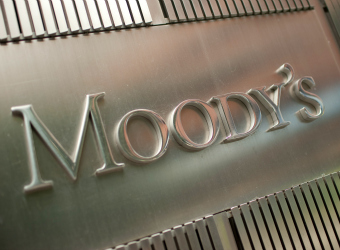The outlook for Oman’s banking sector was cut to negative by Moody’s Investors Service to reflect a reduction in the government’s ability to support the country’s banks, weaker economic growth and tightening liquidity.
“We expect a softening in Oman’s operating environment, with fiscal consolidation amid prolonged oil price weakness weighing on economic growth,” Moody’s analyst Mik Kabeya said in a statement on Tuesday. “This will weigh on the credit growth which Moody’s expects would fall by five percent in 2017 from 10.1 percent in 2016.”
The change from stable comes after Moody’s last month cut the rating of the sultanate to the second-lowest investment grade, saying its progress toward addressing structural vulnerabilities to a weak oil price environment has been more limited than expected. Oman has a sub-investment grade status at S&P Global Ratings.
A halving of crude prices since 2014 left Oman with a budget gap of almost 22 percent of economic output in 2016, according to the International Monetary Fund.
The country posted a deficit of 2 billion rials ($5.2 billion) in the first five months of the year, compared with 2.5 billion rials in the year-earlier period.
Oman plans to raise about $2 billion through debt sales this year for its 2018 budgetary needs, people familiar with the matter said last month.
“Funding and liquidity conditions will remain tight, as high domestic government borrowing limits funds available to lend to the wider economy,” Moody’s said. “However, the government’s international bond issuance, slower credit growth and higher oil prices will moderate the pressure.”
Slower economic growth will push problem loans to around 3 percent of gross loans this year and next, up from 2.1 percent at the end of March, Moody’s said. The high concentration of loans to single borrowers and to the real estate sector are also a downside risk to asset quality.
Moody’s also expects bank profitability to decline slightly. Net interest margins are likely to remain stable at around 2.4 percent as higher lending rates offset increasing funding costs, while loan loss provisioning will increase as problem loans rise.
Oman in August signed an agreement for $3.5 billion in loans from Chinese financial institutions and in May raised $2 billion through an Islamic bond sale, which lured orders for more than three times the issue size.
Source: Bloomberg
